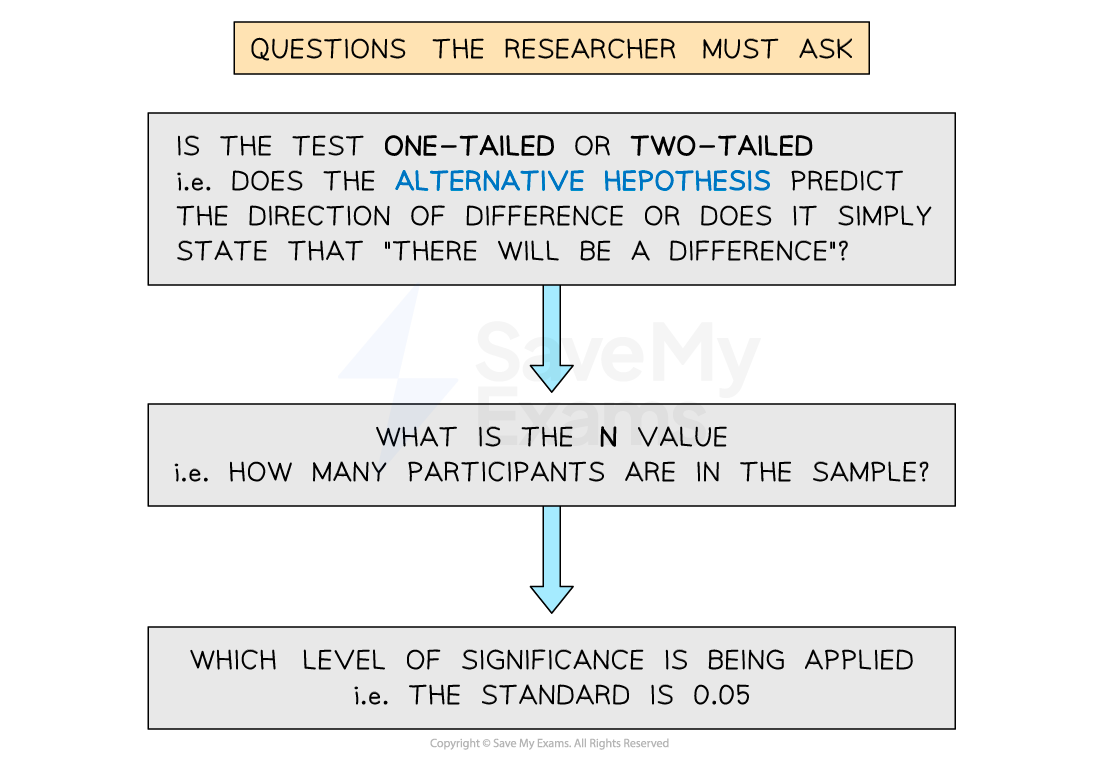Syllabus Edition
First teaching 2015
Last exams 2025
Statistical Testing (AQA AS Psychology): Revision Note
Exam code: 7181
Probability & significance
Psychologists are interested in finding out if the results of their studies show real differences or correlations, or if the results are due to chance factors
To determine whether results are significant and not due to chance factors, researchers use a measure of the level of significance
Researchers must decide how large an effect or relationship is required to conclude that the observed result is unlikely to be due to chance
This decision is reflected in the level of significance applied to the data
The level of significance is expressed as a decimal value where 'p' stands for the probability that chance factors are responsible for the results
For most purposes in psychology, the 5% level of significance is appropriate which is expressed as p < 0.05 (i.e. the probability of chance factors producing the observed result is less than or equal to 5%)
The research will then use statistical tables to find the critical value which will determine whether or not they can reject the null hypothesis
Use of statistical tables & the critical value
Once the researcher has conducted their research and carried out a statistical test they then have an observed value which is used to determine whether the results of their study are significant
The observed value needs to be compared to the critical value in the statistical table
Each statistical test has its own critical values table
The critical values table for the Mann-Whitney test is different to the table for the Wilcoxon test
To find out whether or not the observed value is significant the researcher must ask the following questions which will help them to use the critical values table properly:
Is it a test of difference (i.e. a lab experiment) or a test of association (i.e. a correlation)?
Is the experimental design independent measures, repeated measures or matched pairs (tests of difference only)?
Is the data nominal, ordinal or interval?
Once the above questions have been answered, the researcher consults the critical values tables to find the value at which a significant result can be claimed e.g.
using the probability level of 0.05, if the observed value is 15 and the critical value is 17 then (for some of the statistical tests) the researcher can claim a significant result
This is due to the observed value being lower than the critical value at the 0.05 level (for some tests the observed value must be higher than the critical value)
If significance is found then the researcher can reject the null hypothesis and accept their alternative hypothesis; the results are not due to chance


Unlock more, it's free!
Did this page help you?